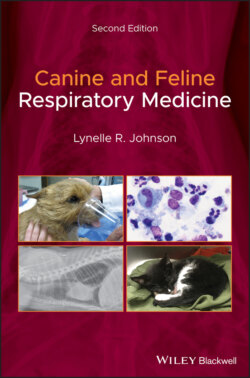Читать книгу Canine and Feline Respiratory Medicine - Lynelle Johnson R., Lynelle R. Johnson - Страница 55
Pleural Fluid Culture
ОглавлениеWhen an exudative pleural effusion is obtained (protein >3 g/dl and cells >5000/μl), samples of pleural fluid should be cultured for both aerobes and anaerobes. In a retrospective study of pyothorax (Walker et al. 2000), bacteria were isolated from 45 of 47 cats (96%) and were visible on cytology in 41 of 45 samples (91%). Obligate anaerobes were present in 40 of 45 samples (89%), and a mixture of obligate anaerobes and facultative organisms was found in 20 of 45 (44%) of culture‐positive cats. An average of 2.1 species of obligate anaerobic bacteria and 1.2 species of aerobic bacteria were isolated in cats. In dogs, bacteria were isolated from 47 of 51 samples (92%) and were visible on cytology in 32 of 47 samples (68%). Bacteria included obligate anaerobes in 17 of 47 positive samples (36%), and mixed obligate anaerobes and facultative organisms in 17 of 47 samples (36%). An average of 2.4 species of obligate anaerobic bacteria and 1.6 species of aerobic bacteria were isolated in dogs. In dogs, enteric organisms were the most common aerobic bacteria isolated, while in cats, Pasteurella species were isolated most commonly. Similar anaerobes were isolated from cats and dogs, with Peptostreptococcus, Bacteroides, and Fusobacterium isolated most commonly. Mycoplasma has been proposed to play a role in pleural infection in cats, although this is poorly characterized.
